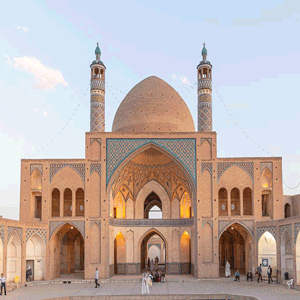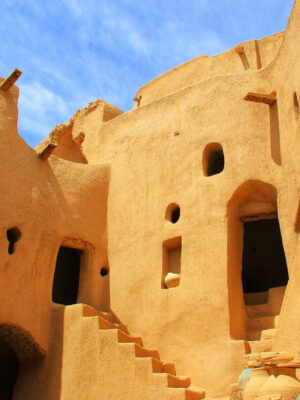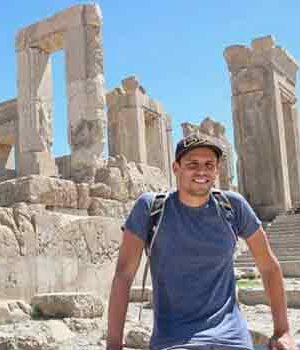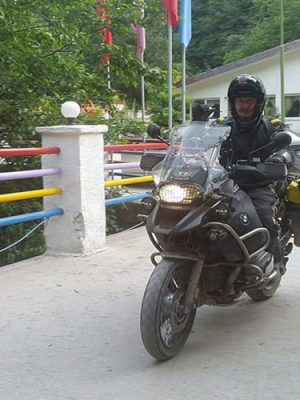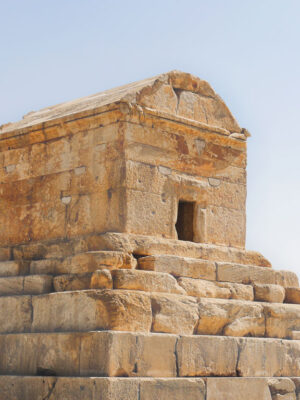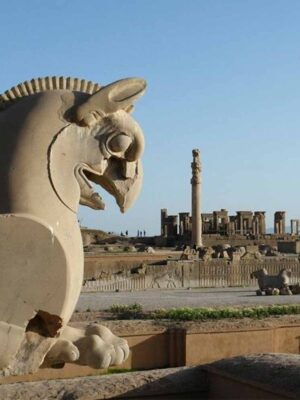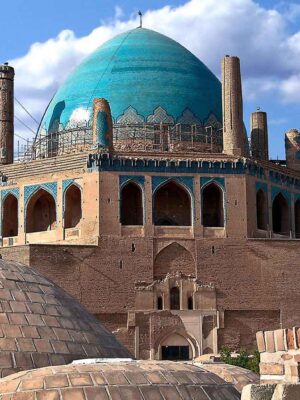Susa
Located in the southwest of Iran in the lower Zagros Mountains is Susa the site of one of the oldest civilizations in the Middle East dating back to 5,000 B.C. Susa encompasses a group of artificial archaeological mounds rising to the east of the Shavur River, including large excavated areas, and the remains of Artaxerxes’ palace. Archaeologists have worked at Susa for well over one hundred years, excavating the extensive remains which stretched from the 4th millennium B.C. to the early Islamic period. On the ruins of the Elamite capital that was destroyed by the Assyrians, Darius built his winter capital. The ruins of the Achaemenian palaces are still visible as are the remains of the Apadana, which lent its name to the famous Apadana audience hall at Persepolis.

The names of Darius and Susa are inextricably linked and it is here that his now famous headless statue (now at Iran’s National Museum) with Egyptian hieroglyphics on the base was found. A broken bull capital is one of the few surface remains at Susa that recalls the magnificence recorded in foundation tablets recovered from the palace of Darius on the Apadana mound. Other artifacts, clay inscriptions and pottery found at Susa are on display at a very good local museum. Susa was at the confluence of two substantial civilizations, the Mesopotamian and the Iranian Plateau civilizations, which reciprocally influenced each other. A city of religious prominence, its key position along ancient trade routes advanced it to a center of commerce, administration and politics. At the height of its importance Susa claimed to be the capital of the world. Susa is distinguished as one of the few ancient sites in the Middle East where two principal social and cultural developments took place: the development of the early state and urbanization.
Susa
Located in the southwest of Iran in the lower Zagros Mountains is Susa the site of one of the oldest civilizations in the Middle East dating back to 5,000 B.C. Susa encompasses a group of artificial archaeological mounds rising to the east of the Shavur River, including large excavated areas, and the remains of Artaxerxes’ palace. Archaeologists have worked at Susa for well over one hundred years, excavating the extensive remains which stretched from the 4th millennium B.C. to the early Islamic period. On the ruins of the Elamite capital that was destroyed by the Assyrians, Darius built his winter capital. The ruins of the Achaemenian palaces are still visible as are the remains of the Apadana, which lent its name to the famous Apadana audience hall at Persepolis.

The names of Darius and Susa are inextricably linked and it is here that his now famous headless statue (now at Iran’s National Museum) with Egyptian hieroglyphics on the base was found. A broken bull capital is one of the few surface remains at Susa that recalls the magnificence recorded in foundation tablets recovered from the palace of Darius on the Apadana mound. Other artifacts, clay inscriptions and pottery found at Susa are on display at a very good local museum. Susa was at the confluence of two substantial civilizations, the Mesopotamian and the Iranian Plateau civilizations, which reciprocally influenced each other. A city of religious prominence, its key position along ancient trade routes advanced it to a center of commerce, administration and politics. At the height of its importance Susa claimed to be the capital of the world. Susa is distinguished as one of the few ancient sites in the Middle East where two principal social and cultural developments took place: the development of the early state and urbanization.






